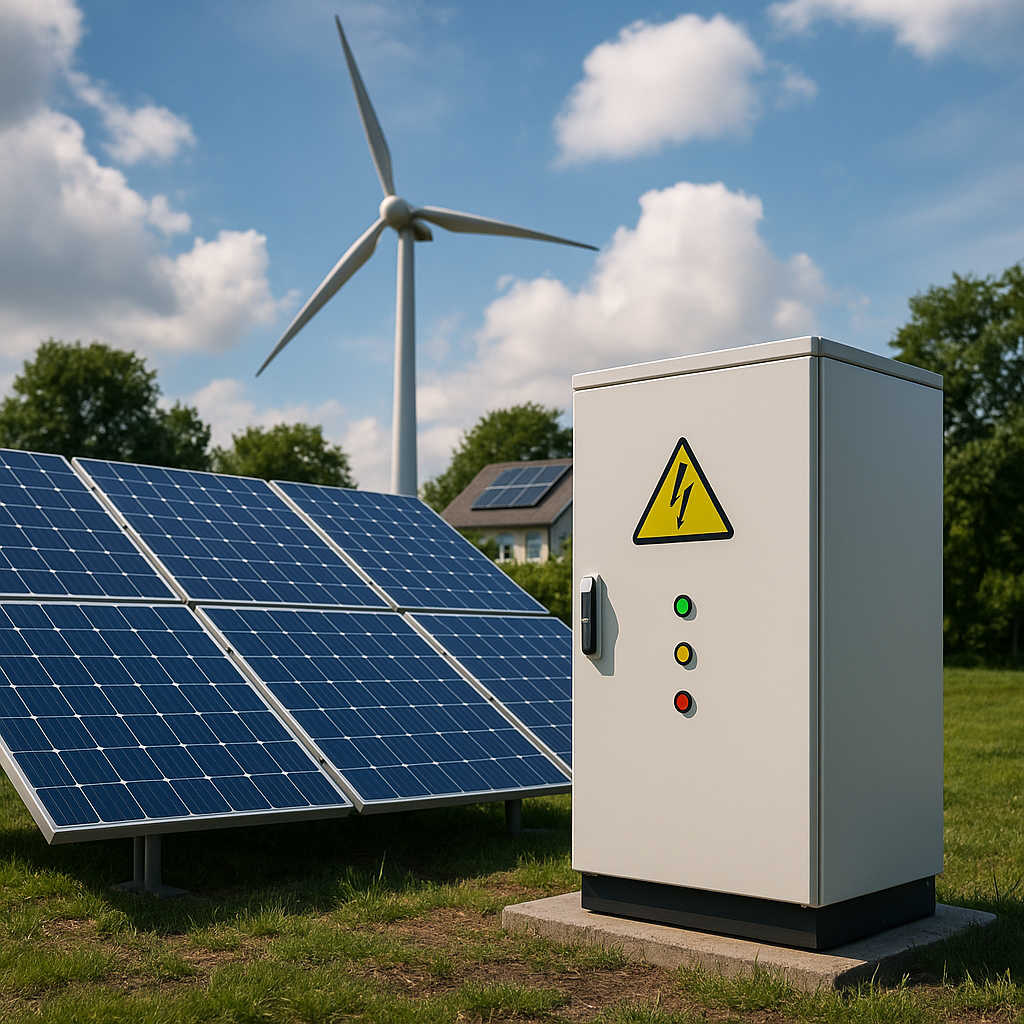AI-driven energy strategy enhances renewable integration and load flexibility
Renewable energy sources like solar and wind are inherently intermittent and unpredictable, making it difficult for grid operators to maintain consistent voltage and frequency levels. Traditional rule-based or even model-predictive controllers have proven insufficient in adapting to these dynamic conditions, particularly at the level of individual buildings and neighborhoods where demand response (DR) strategies are deployed.

Countries worldwide are racing toward decarbonization but are increasingly constrained by the technical limitations of aging power systems and the volatile nature of renewable energy sources. Amid growing concerns over power grid instability and load imbalance, a new study published in Energy Exploration & Exploitation presents a cutting-edge artificial intelligence (AI) solution to stabilize smart grids.
More specifically, the research "Enhancing Grid Stability and Renewable Energy Integration with Reinforcement Learning for Optimized Demand Response" details a reinforcement learning-based strategy that significantly improves energy efficiency, load flexibility, and operational stability across battery–photovoltaic (PV) integrated systems.
The authors develop and test a deep reinforcement learning (DRL) framework using the Soft Actor-Critic (SAC) algorithm, augmented with automatic temperature adjustment, to manage energy flow more effectively within smart buildings and distributed grids.
How does the study address the problem of renewable energy intermittency?
Renewable energy sources like solar and wind are inherently intermittent and unpredictable, making it difficult for grid operators to maintain consistent voltage and frequency levels. Traditional rule-based or even model-predictive controllers have proven insufficient in adapting to these dynamic conditions, particularly at the level of individual buildings and neighborhoods where demand response (DR) strategies are deployed.
The RL-based approach does not rely on fixed models or assumptions. Instead, it continuously learns optimal control policies through interaction with a simulated environment. This design ensures that the energy system can respond in real time to changes in energy demand, supply, and pricing without the rigidity of conventional control logic.
The simulation platform, CityLearn, is employed to model various building energy profiles and their interactions with the grid. Within this environment, the RL agent learns how to manage battery charging and discharging cycles, utilize PV generation more effectively, and shift energy loads during peak and off-peak times. The approach not only accommodates the variable nature of renewables but also anticipates and adjusts to shifting grid conditions in real time, making it uniquely suited for next-generation smart grid systems.
What makes the proposed reinforcement learning strategy stand out?
The novel method integrates the Soft Actor-Critic (SAC) algorithm with an automatic temperature adjustment mechanism. The SAC algorithm, already known for its balance between exploration and exploitation in reinforcement learning environments, is enhanced by dynamically tuning its entropy parameters. This results in faster convergence and more stable learning behavior, critical when applied to volatile energy systems.
Through rigorous simulation trials, the authors compare their method to standard SAC implementations and traditional rule-based controls. The results are notable: the proposed system reduced energy costs by up to 15 percent compared to other SAC configurations and by 3 percent relative to rule-based baselines. These savings come not only from optimized battery operation but also from smarter decision-making in load shifting and solar power utilization.
Equally important is the improvement in load-shifting flexibility. The system learned to shift energy consumption away from grid stress periods to times when renewable generation is abundant, effectively flattening demand peaks and supporting grid stability. This is a crucial capability in cities with high solar penetration, where energy production can fluctuate widely over short periods.
Additionally, the reinforcement learning model demonstrated robustness across various building types and weather conditions, indicating strong generalizability. It learned to manage energy assets adaptively and without pre-defined models, positioning it as a scalable solution for urban energy management systems of the future.
What are the broader implications for smart grid operations?
The research offers a scalable framework for real-world smart grid deployment. As global urbanization and renewable energy expansion accelerate, energy management will increasingly depend on decentralized, intelligent systems capable of autonomous operation. This study presents a proof of concept that artificial intelligence, specifically, model-free reinforcement learning, can fill that role effectively.
The authors argue that the combination of battery storage and PV integration is one of the most promising pathways for managing distributed energy resources. However, these systems require advanced control algorithms to operate efficiently. By using DRL, the proposed system achieves not only energy cost reduction but also contributes to overall grid reliability, addressing both economic and technical pain points faced by utilities.
Notably, this approach aligns with global energy transition goals by enabling deeper renewable integration without sacrificing system performance. While the study remains simulation-based, it lays the groundwork for pilot programs and hardware integration. It also highlights the importance of future research into multi-agent reinforcement learning and hierarchical control for large-scale applications.
From a policy perspective, the findings support increased investment in AI-driven grid solutions and open the door for regulatory frameworks that accommodate intelligent energy automation. The scalability, cost-effectiveness, and adaptability of the approach make it a viable candidate for smart city infrastructure planning and energy justice initiatives aimed at reducing systemic inefficiencies and enabling equitable energy access.
- READ MORE ON:
- AI in smart grids
- Reinforcement learning in energy systems
- Grid stability with renewable energy
- Demand response optimization
- AI energy management systems
- How reinforcement learning improves grid stability
- Deep reinforcement learning for urban energy systems
- AI and clean energy transition
- FIRST PUBLISHED IN:
- Devdiscourse










